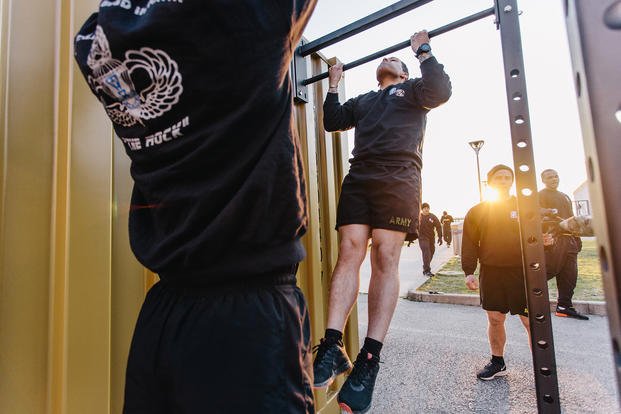Pull-ups. Most people cannot do them.
That is right. Most men and women cannot do pull-ups. Whether you are an overweight male or a female who lacks upper-body strength, the pull-up is an exercise that has been replaced with pulldown machines, dumbbell rows and biceps curls in the gym for as long as there have been weight rooms.
People who do pull-ups are either tested in pull-ups regularly or know they are a foundational exercise of strength that builds the back, shoulders and arms better than any calisthenics exercise out there.
In fact, you would call the pull-up, handstands and dips the heavy-lifting exercises of the calisthenics world. Lifting 100% of your body weight is tough and requires work. Just as you worked to get your running times faster and your body fat reduced, you have to work even more diligently to do pull-ups.
That is why people cannot do them. They just do not do them or maybe feel there is no need to do them. Just in case you are wondering where this is going -- there is a need for pull-ups.
For the past 20-plus years that I have been involved with military fitness, there seems to be a debate every year or two about military members being tested on pull-ups. We hear only about women's inability to perform pull-ups mainly, because most of them cannot do them at all. But there are men as well who need to perform better at pull-ups.
What follows are some reasons why we need to get better at, or at least practice, pull-ups:
1. Pulling your own weight: It is as simple as that. If you can do a pull-up, you can pull your own weight literally and figuratively. Carrying combat gear, climbing over obstacles, and getting up ropes and caving ladders require the strength and grip that pull-ups help us build.
2. Tactical grip: Carrying equipment, an injured buddy and grabbing ahold of people require a strong grip. There are many ways to build grip, such as climbing ropes, deadlifts, throwing battle ropes and many other old-school methods (Operator Grip). However, the pull-up is an exceptional test to find candidates who will have the capability to endure the training, or real life-and-death situations, experienced in many tactical professions.
3. Keeps weight down: As you increase your body weight over the years, you will find your ability to do pull-ups more difficult. This is where most men fail in the pull-up exercise. They likely could do a pull-up if they were not 20-30 pounds overweight. If you are tested regularly in pull-ups, you will not only have to keep your body fat down, but you have to train in pull-ups, which will help you keep your muscles strong. This will increase your lean body mass and general ability to do more with your body weight.
4. Tactical needs: There are upper-body strength and grip job requirements within the military, police (SWAT) and firefighting communities. It is part of the job. Doing pull-ups is an exercise that easily transfers to performing those skills well.
Sure, you can use your legs to help you with many of these pulling motions when done in real life (sometimes). But sometimes, due to the angle of the situation and the movement, you have to rely solely upon your pure pulling and grip strength to save a life -- and it may be your own. Yes, it is that serious.
See related articles:
- Pull-up Push (Building more pull-ups quickly)
- Perfecting the Pull-up
- Tips for Better Pull-ups
Stew Smith is a former Navy SEAL and fitness author certified as a Strength and Conditioning Specialist (CSCS) with the National Strength and Conditioning Association. Visit his Fitness eBook store if you're looking to start a workout program to create a healthy lifestyle. Send your fitness questions to stew@stewsmith.com.
Want to Learn More About Military Life?
Whether you're thinking of joining the military, looking for fitness and basic training tips, or keeping up with military life and benefits, Military.com has you covered. Subscribe to Military.com to have military news, updates and resources delivered directly to your inbox.


















